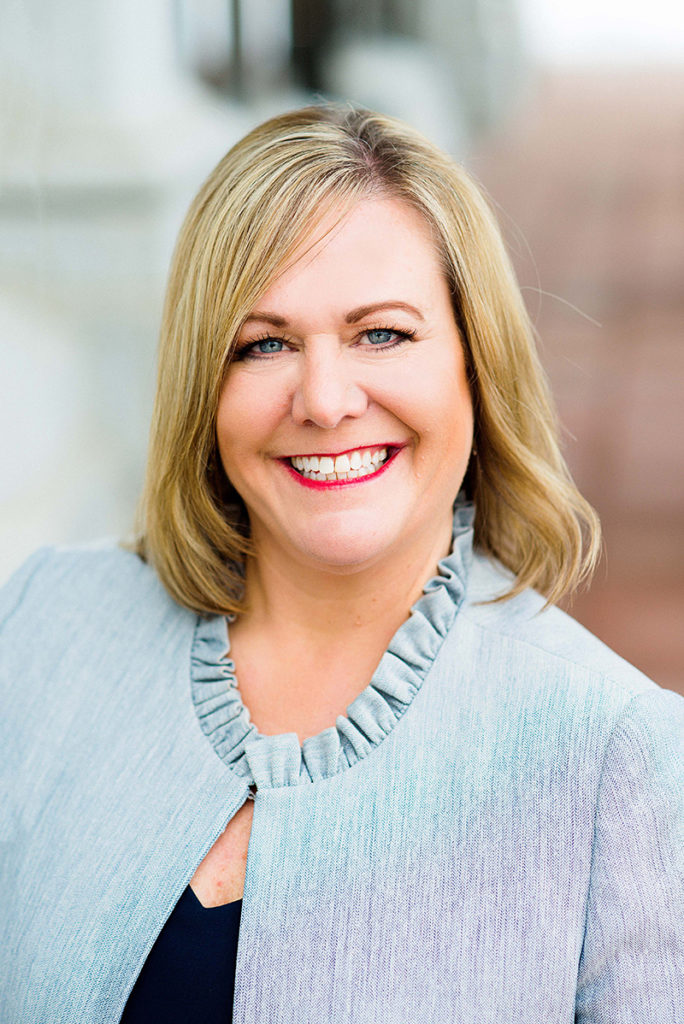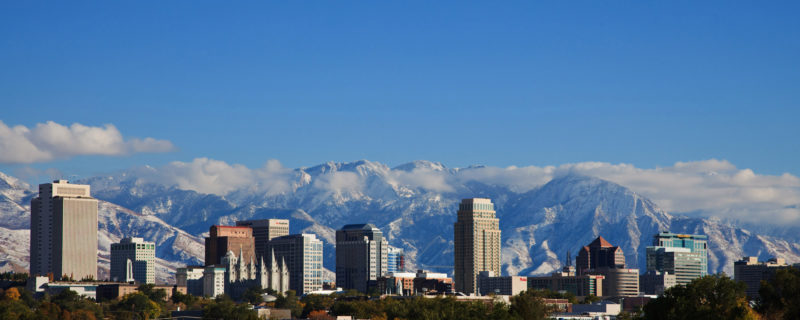Audio
Business Elevated Podcast (Episode 31)
This podcast series features business and government leaders discussing what it’s like to live and work in the great state of Utah. This episode includes a conversation between Kori Ann Edwards, managing director of operations of the Utah Governor’s Office of Economic Development, and Dane Ishihara, economic analyst at GOED.
The Business Elevated podcast is also available on Apple Podcasts, Spotify and Stitcher.
Video
Transcript
Introduction
Welcome to the Business Elevated Podcast, where we discuss what it’s like to live and work in the great state of Utah. Did you know Utah is frequently ranked the best state for business by Forbes? This podcast is a production of the Utah Governor’s Office of Economic Development. Thanks for joining the conversation.


Conversation
Kori Ann Edwards: (00:21) Welcome to the Business Elevated podcast. I’m Kori Ann Edwards, the managing director of operations at the Governor’s Office of Economic Development, also known as GOED. Today, my guest is Dane Ishihara, and he and I are going to talk about a new initiative.
Dane, thank you for joining me.
Dane Ishihara: (00:38) Thanks for having me. I’m excited to discuss the new program.
Kori Ann Edwards: (00:42) We decided to make this available via video and audio. We’ll be posting this as a podcast and on our YouTube channel. Let’s get started. We’re here today to discuss a new GOED initiative, the COVID-19 Commercial Rental Assistance Program.
This program was created on April 30th, 2020, when Governor Herbert signed Senate Bill 3006 that came out of the special legislative session. The program grants rental relief to businesses, nonprofits and individuals that have lost revenue as a result of measures taken during the coronavirus pandemic.
Dane, let’s start by talking a little bit about the program. Can you talk a little bit about the grant amounts that companies might be eligible for? How are those amounts determined?
Dane Ishihara: (01:37) Thanks, Kori Ann. An applicant who meets the eligibility requirements will receive between 25% and 100% of a single month of its business lease amount, not to exceed $10,000.
The percentage is based on a formula that takes into account the company’s loss of gross revenue. It also considers whether the company received funds from the PPP program that was part of the CARES Act payment program. For applicants that did not receive PPP funds, grant amounts will be the lowest of 100% of monthly rent with a monthly gross revenue loss of 71% or more. Or, 50% of the monthly rent with a monthly gross revenue loss between 50 and 70%. That amount is not to exceed $10,000. For applicants that did receive PPP funds, grant amounts will be the lowest of 50% of the monthly rent with a monthly gross revenue loss of 71% or more. The second option is 25% of a monthly rent amount with monthly gross revenue loss between 50% and 70%. That amount is not to exceed $5,000.
Kori Ann Edwards: (02:41) Thanks, Dane. Could you maybe give us an example of a scenario a company would be looking at with their rent? I also want to clarify that when we say PPP, that is the CARES Act paycheck protection program, managed by the small business administration.
Could you give us a little example of some of those scenarios.
Dane Ishihara: (03:03) For a company that did not receive PPP funds, and their rent was 5,000 per month, and they had a revenue loss between 50% and 70%, their potential grant amount would be $2,500. That is half of their monthly rent amount.
For a company that received the PPP funds, that amount would go down to $1,250, which would be 25% of their $5,000 monthly rent amount.
Kori Ann Edwards: (03:34) Great. Thank you. So just to clarify, the program is available for companies to pay one month of their rent. That’s how the formulas are taking place. Can you talk us through with the dates that we’ll be looking at to measure the monthly gross revenue loss?
Dane Ishihara: (03:52) Yes. The monthly gross revenue loss will be calculated from the February 2020 gross revenue. The applicant can pick a four week period after March 1st to establish their gross revenue loss.
Both of those numbers will be placed in the application during the process. We’ll calculate the ratio with those two numbers.
Kori Ann Edwards: (04:16) Great. I think we said there is $40 million available for this grant. It’s come through the CARES Act and our state leadership. It’s a first-come, first-serve basis. There are some eligibility requirements for businesses that can apply for the $40 million. Can you talk us through what type of business can apply for this with this grant relief?
Dane Ishihara: (04:41) We can discuss the criteria. The company has to have a current lease in Utah, claim Utah is their primary place of business and has been in operation since February 15th with at least fewer than 100 employees. They also must demonstrate the loss of 50% of gross revenue. They may not have received funds from the COVID-19 Agricultural Operations Grant program. Part of the qualifications is you’ve registered with the Division of Corporations and commercial code, under the Department of Commerce, a sole proprietor, a tribal entity or an independent contractor. Nonprofits qualify as well.
Kori Ann Edwards: (05:22) Thank you. As a reminder, qualifying businesses and nonprofits may apply. We also recognize there’s $40 million for this grant. Unfortunately, it won’t help every business or nonprofit. We hope it can go a long way in helping many of our Utah small businesses, which is the focus of GOED since this pandemic has begun. Again, you have to have less than 100 employees.
This Monday, May 11th, 2020, at 9:00 AM MST, you can apply for this by going to the state’s coronavirus site at coronavirus.utah.gov. Again, coronavirus.utah.gov. Completed applications are accepted on a first-come, first-serve basis. You want to get in there and get your application in as quickly as possible.
We’ll go through a couple of questions and answers we anticipate with the program. Questions will also be listed on the coronavirus.utah.gov website. You’ll have answers to those FAQs on there. Any additional questions that you might have can be emailed to the program’s email account at rentalgrant@utah.gov.
Dane, are you okay if we go into a few Q and A’s?
Dane Ishihara: (06:57) Yes.
Kori Ann Edwards: (06:58) One of the big questions is, “I’m a company and I have multiple locations. I’m a tenant in a few commercial properties. Based on my locations, am I okay to apply for multiple rental assistance?”.
Dane Ishihara: (07:15) Yes. You can use multiple lease agreements. Those qualifications in the maximum amounts are still in place for the business entity. If a business entity has multiple leases that add up to $10,000, they could potentially qualify for that amount. They couldn’t qualify for that amount per lease. It’s per business entity.
Kori Ann Edwards: (07:34) Just to clarify. If you’re a company with multiple locations, you can apply for multiple locations, but you can’t exceed the maximum amount. If you did not take the PPP money, you can go up to $10,000. If you did take the PPP money, then you can go up to $5,000.
Yes. Multiple companies, but we cannot exceed the max amounts per company.
Dane, you talked about needing to be a business in good standing and being headquartered in the state of Utah with a Utah address. You talked about the Department of Commerce and where you can go for that business entity. If a company needs to find its business entity number, or know that they’re in good standing, where can they go? We have found that a lot of companies don’t realize that this is an annual renewal. Also, their standing with the state has expired, and that takes a little bit of time to get that renewed through the Department of Commerce.
Can you walk us through a little bit as to where they find that business entity, and go through that process?
Dane Ishihara: (08:37) Yes. They can go to the Department of Commerce’s website, which I believe is commerce.utah.gov and find it. Under a business-centered entity, search their business entity. We’ll also need that entity number, as you mentioned earlier in the application.
Something to add to this part is to make sure you’re using your business entity is consistent throughout the application process, and all of the supplemental documentation as well. If you do have DBAs, make that known in your application. When we’re reviewing the documentation we know it’s consistent throughout. We’re not wondering if it is, in fact, the same business entity during the process.
Kori Ann Edwards: (09:16) That’s very good guidance. Thank you so much. Just to remind everybody that the business entity is through the Department of Commerce. It’s under the division of corporations and commercial code. You would go to a business entity search, search for your company and it will list your entity ID number. Make sure that’s all up to date and in good standings. Make a note of your entity ID number, because you are going to need that for your application.
Walk us through the application process. So right now, you can see the information on the coronavirus.utah.gov website. When you go and scroll through the bottom it will list all of the eligibility and criteria we’ve talked about in this podcast. Right now, the apply now button will be grayed out because it is not yet live. On Monday at 9:00 AM MST, that button will go live. You’ll be able to click on that.
Dane, walk interested applicants through some of the things they’ll be asked. How they’ll submit their application. Go through that process.
Dane Ishihara: (10:31) As Kori Ann mentioned, you’ll go to the online system and fill out the application. I think this is a good time to highlight some of the documents needed when you’re submitting your application.
We will need your profit and loss statement from the month of February, and also for the four week period you’re claiming your revenue loss. We’ll need your two most recent state or federal tax returns with the profit and loss statements for the four months prior to submitting the application. You will also need to include your current lease agreement and documentation that the lease agreement has been paid or the most recent payment of your lease agreement.
All of those documents will be uploaded during the application process. We will verify the information on the back end after you’ve submitted your full application. The first-come, first-serve basis includes the application being complete. Your options are greater if you submit a complete application from the beginning, and we’re not going back and forth trying to locate additional documents. Once we receive all of that information, we’ll begin to review your application.
Kori Ann Edwards: (11:35) Thank you. So as Dane indicated, it’s really a two-step process. You’ll go and hit the apply now button where you’ll provide some initial information. Once you do that, the information is reviewed. You will get a user ID name and a password that allows you to go in and complete your full application. It is a two-step process. It will take up to about 24 hours, or maybe less, for you to get the user ID and password. Wait for that. A lot of people get nervous about that. They want to go in and apply multiple times. Please don’t do that. Please wait for your user ID and portal information. Once that happens, you’ll be able to put in all of your information that Dane just described. Eligibility is then will be determined. You will get some email letters that let you know your application has been fully submitted.
If you’re eligible, you will get an award letter. If you are deemed ineligible, maybe you have more than 100 employees, or you’re not headquartered in Utah, or your business entity is not in good standing. Those would be maybe some areas to be deemed ineligible. You will get a letter indicating that you are ineligible at that time.
Dane, just talk a little bit more about how an applicant will know if their application was accepted.
Dane Ishihara: (13:06) Once we’ve determined eligibility, you’ll receive a letter notifying you that you’ve been awarded a grant from the program. That will go through an email. Following that, within the next few days, you’ll receive a check in the mail. Make sure your application has the correct mailing address so when we do issue checks they’re getting delivered to the correct address.
Kori Ann Edwards: (13:31) We’re really excited about this. Excited and grateful for both the federal leadership and state leadership that made this possible for Utah businesses.
Hopefully, this will be helpful to you as you’re going through these unprecedented times. Again, qualifying businesses and nonprofits may apply at coronavirus.utah.gov beginning May 11th, 2020, at 9:00 AM MST. Completed applications are accepted on a first-come, first-serve basis based on submitting your full application.
We’ve got $40 million to give out through this process. If there are any questions we’ve got the FAQs and everything we’ve talked about on coronavirus.utah.gov. Anything that might be missing or unanswered can be emailed to rentalgrant@utah.gov.
Thank you for the time. I hope this was helpful. Hopefully, this prepares you to be an applicant for this program. We’re super excited to be bringing this to you. I’m appreciative again of our leadership in the state. Also grateful for GOED and the focus to help our businesses in this time of need.
So thanks again.
Conclusion
Thanks for listening to the Business Elevated podcast, a production of the Utah Governor’s Office of Economic Development. Listen to other episodes where you get your podcasts or at business.utah.gov.
